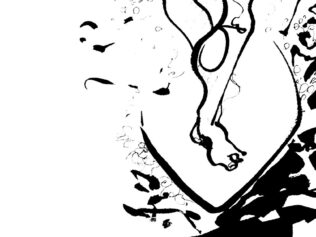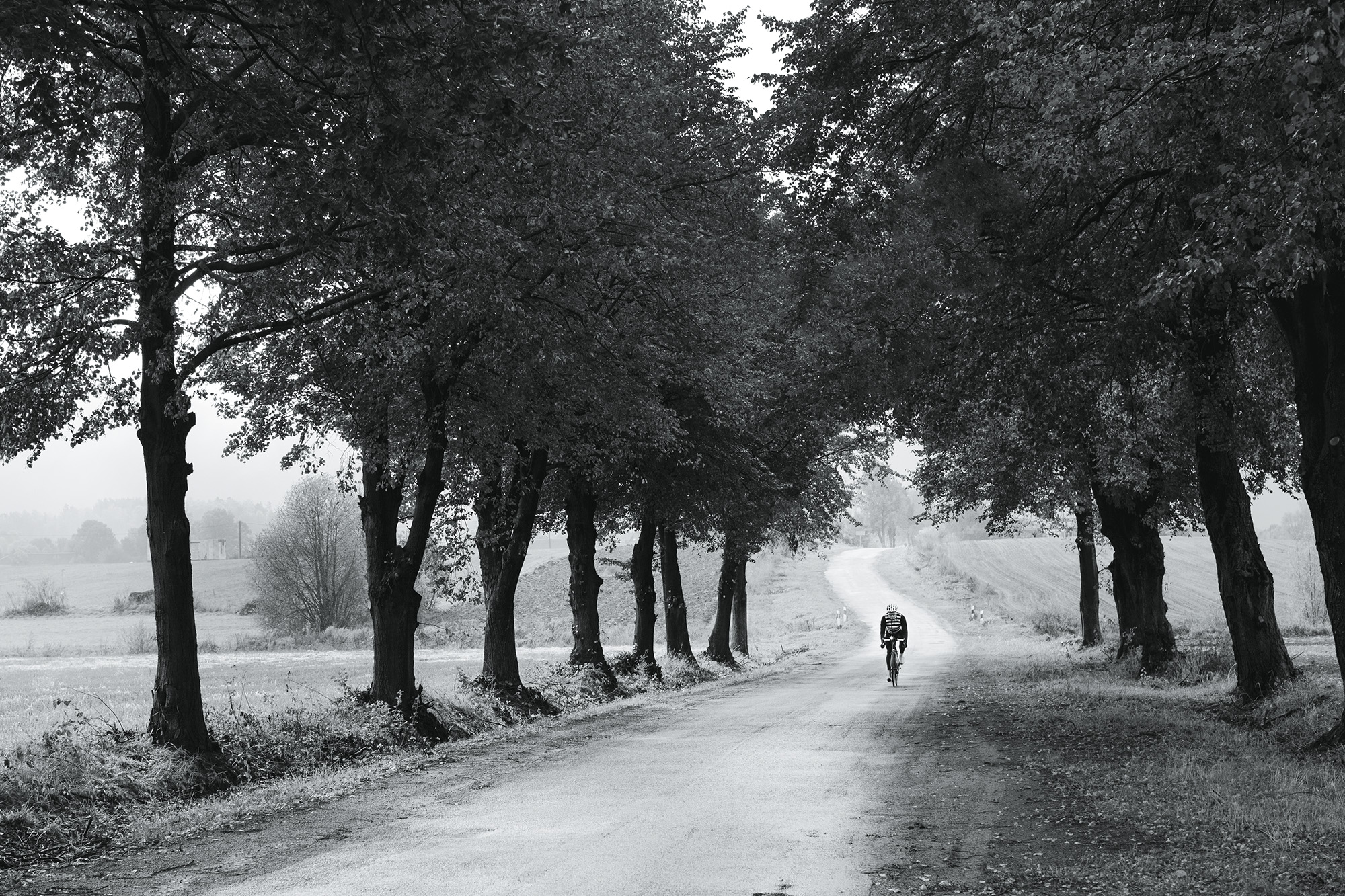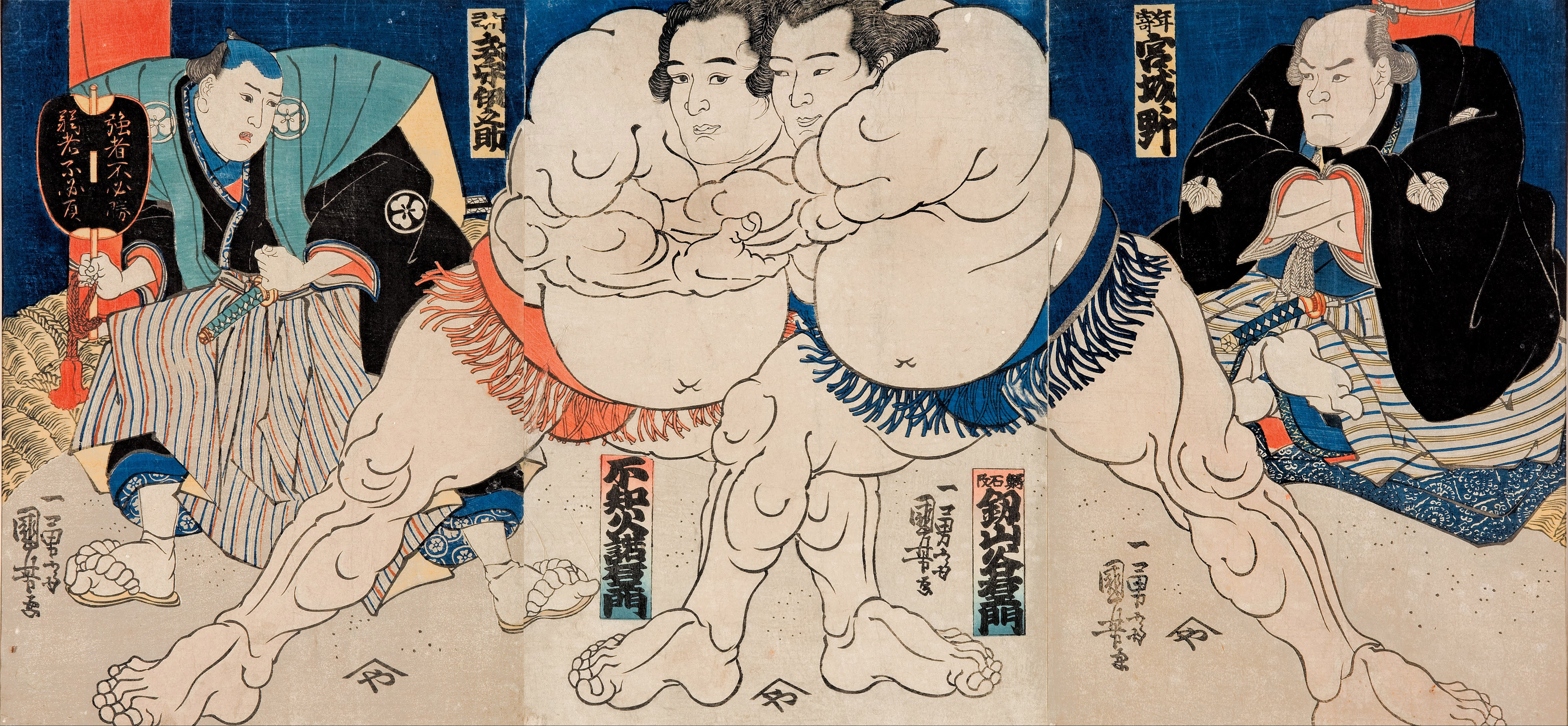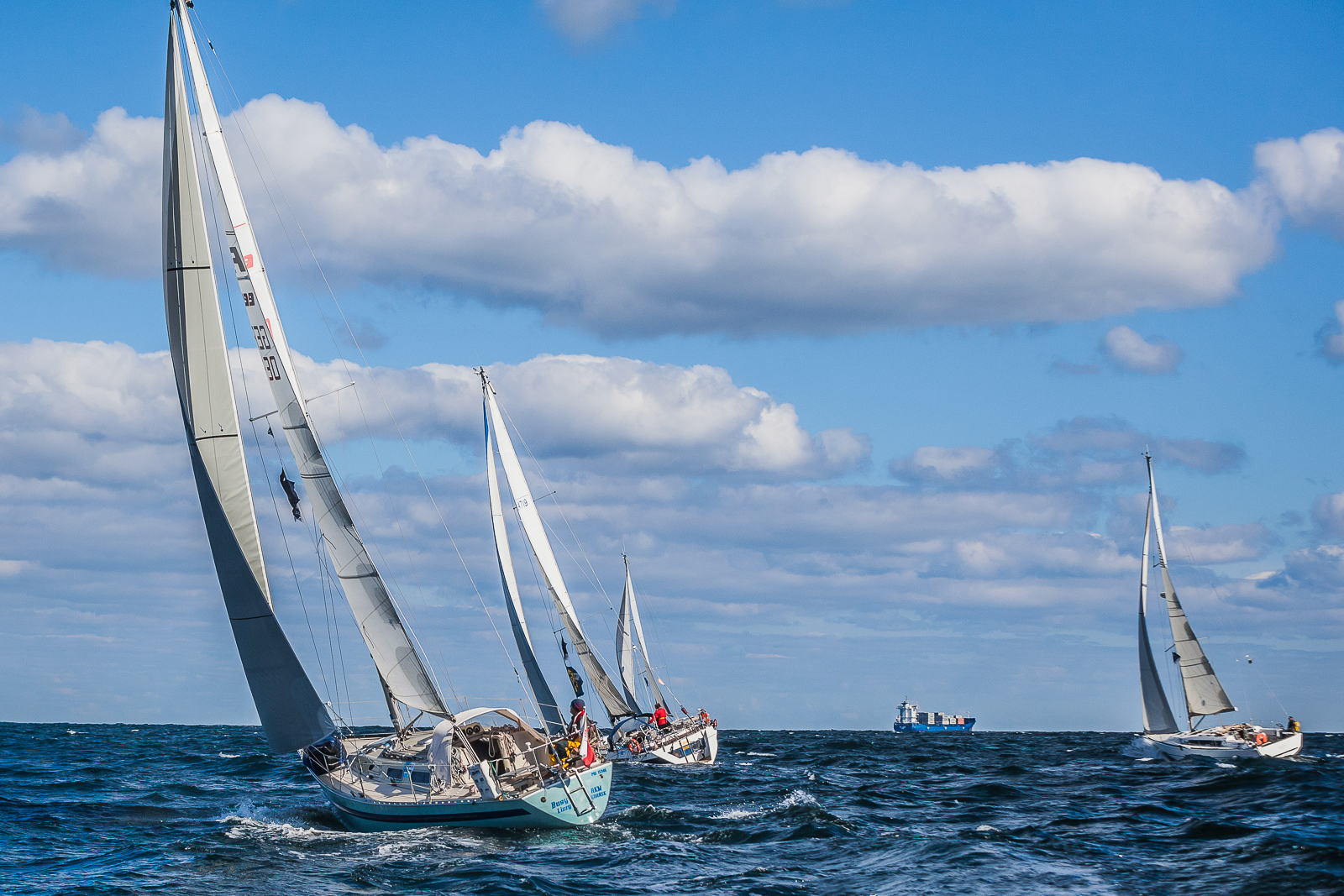
How come, for decades, Polish aviators have been the best in the world in precision and navigation rally flying? And how come, for years, almost nobody knew anything about it?
A barrack, lined with PVC panelling. Two plywood armchairs with yellow-brown velour backs, a swivel office chair at a table, a radio crackling every now and then: “Papa, Oscar, Quebec.” On the wall, a calendar with a scantily-clad young lady advertising screws. In the armchair, a 60-year-old, short, pot-bellied man with a grey moustache and equally grey hair, thinning on his forehead, is chasing off wasps circling over some doughnuts. He is wearing a stretched-out T-shirt with the slogan “Top Dad” styled as the Top Gun logo.
The man is probably the most successful athlete in Poland. Janusz Darocha – a pilot, expert in precision and navigation rally flying. As he says, he received “36 or 37 medals at the World and European Championships.” He isn’t sure how many exactly. Irena Szewińska, recognized as the best Polish sportswoman of all time, has won 17 Olympic and championship medals.
Next to the barrack at the Michałkowo airport near Ostrów Wielkopolski, where Darocha is on duty as a park ranger, lies the wreck of a Wilga plane, in which he and his colleagues won numerous medals in the 1980s. No nose, no propeller, with engine parts scattered around the cabin. One is tempted to write: the perfect illustration of the state of Polish aviation sport. But that would not be true.
Between 1983 and 1999, Poles never gave up the World Championship gold medal in precision flying (held every two years); there were years when they took the entire podium. All-time charts of navigation rally flying look similar. And nothing ever changes – Krzysztof Skrętowicz, before Darocha and Michał Wieczorek, won the gold medal at the last World Championships in precision flying (2018). In addition, there are successes in gliding (the most titled glider in history and the current world champion is Sebastian Kawa from Zabrze, Poland) and model-making. Polish aviation remains a superpower.
The main difference is that in the 1980s, the pilots would land on newspaper front pages and would spend the first Saturdays of January at the Sports Champions Ball – Krzysztof Lenartowicz and Wacław Nycz came fourth in the ranking of Przegląd Sportowy [Sports Review]; Janusz Darocha came third. Today, not only do they have no chance to repeat these results, but almost nobody knows about their achievements.
Pilots like footballers
There is a temptation to explain the popularity of pilots in the 1980s as a result of the then collapse of Polish sport. That decade saw canoeists, a table tennis player, a wrestler, and a judoka – representatives of disciplines that today are at best heard about during the Olympic Games – among the winners of the Przegląd Sportowy ranking.
“In 1982, in the middle of martial law, we, the pilots, were probably the only ones to receive permission to travel abroad to a foreign event. We were allowed to go to the European Championships in Sweden,” recalls Lenartowicz. “I won gold, thanks to which I took fourth place in the Przegląd ranking. I did not attend the ball; I had TU-154 training at the same time. My wife went alone. But aviation sport entered the salons and remained there because we were winning more and more medals.”
If we look closer, however, the thesis about the popularity of aviation due to a general drought in Polish sport begins to falter. Yes, there weren’t many successes, but the footballers still won third place in the World Cup (1982) and they finished the following one in the Round of 16. Poland – like other countries of the so-called Socialist Bloc – boycotted the games in Los Angeles (1984), but as the Cold War was nearing the end, our athletes brought back 16 medals from Seoul (1988).
It is more about a time when sport functioned in a different way. Zbigniew Boniek scored for Juventus and Roma, but his goals rarely appeared on Polish television. Football had not yet grown to the size of a monster that devours all the fans’ interests, and players had not yet turned into celebrities invading showbusiness. Weightlifters, balloonists, bodybuilders and wrestlers landed on the front pages and covers of sport newspapers and magazines.
“At the airport, the pilots were welcomed with a fete – it was almost the same as when our players returned from the World Cup,” Jerzy Iwaszkiewicz, who in the 1980s reported on the successes of Polish pilots in the weekly Sportowiec, wrote in 1985. “I did not exaggerate with that fete, the press and television were there, but nonetheless the pilots never saw mass popularity. Darocha or Nycz have never been as recognizable as the footballers,” says Iwaszkiewicz today.
“When we were coming back from the championships in Sweden, the welcome committee was waiting for us at the first airport, in Słupsk. We were only refuelling there and had flown on to Warsaw. It was a hot summer, and the cabins were unbearably hot. It wasn’t until just before landing that we changed into our suits, because various officials were waiting for us on the tarmac,” recalls Lenartowicz.
Medal on unpaid leave
“After the first medal at the world championships, I was on my way to work on the tram. It was really crowded; I was standing right next to two guys who also worked in my steelworks. And one goes: ‘Have you heard? Darocha won the bronze at the championships. He must have gotten a lot of cash!’ And I didn’t even have a Fiat 126 back then,” recalls Darocha. At the time, the authorities employed athletes in fictitious, full-time jobs in mines and other workplaces, because socialist doctrine excluded professionalism. Fictitious, because no one ever saw Włodzimierz Lubański squeezing through the narrow sidewalks of the mine drifts several hundred metres below ground, or Czesław Lang in the trenches or at the military training ground.
It was different with the pilots, however. Nycz really did work as an instructor and tutor of young pilots, Lenartowicz really was a LOT pilot, and Darocha really was a fireman at Huta Bieruta in Częstochowa. When they wanted to go to a competition, they had to book time off work. “Iwaszkiewicz once wrote that ‘Darocha won a medal while on unpaid leave.’ The president of the steelworks told me that he would prefer not to read such things anymore. And from then on, trips to the championships were treated differently: I wrote out a holiday card and it was destroyed upon my return. This system remained in place until the end of my time at Huta, even in the 21st century, when the Ukrainians took over the ownership,” says Darocha.
The aviators were amateurs in the strictest sense, they competed for symbolic prizes, and they could not count on much more than that in Poland. Except, of course, the president’s handshake. Darocha was already the winner of multiple world championship medals when he received a small box with a model of a toy car from the local authorities. Another time, the Fire Brigade General Headquarters awarded him with an “Honorary Firefighter” diploma.
“I will insist that flying brings joy and satisfaction,” said in 1986 the head of the Polish Aero Club, General Władysław Hermaszewski, in an interview with Sportowiec. “We would like them to be regular people, working professionally outside of aviation sport, so that later, when they finish their sport careers, they will not be left in a void. Darocha works as a fireman and does not demand any scholarship. It is enough for him and for others that he gets the plane and fuel from us.”
“When I read it…” Darocha gasps. “Had he applied to the Main Committee of Physical Culture and Tourism, we would have received scholarships!”
To want is to fly
Simultaneously, the so-called people’s democracy – or rather the specific circumstances it created – answered part of the question about the successes of Polish pilots. In the West, either the rich or the very resourceful that sought out adequate sponsors could afford to fly. Everyone had to have their own plane and pay for fuel. “Here, PKP [Polish Railways – trans. note] would call the aero club with the information that a fuel assignment had arrived from Warsaw and there was a tanker with sixty-thousand litres on the side track. Thanks to the ‘free’ fuel, we could train whenever and for however long we wanted to. Before the 1985 World Championships, for five days we did nothing else but practice landing accuracy. Sometimes we did one hundred landings in a day. In other countries, this would have been impossible,” says Darocha.
And Lenartowicz adds: “To become a pilot in the Polish People’s Republic, first and foremost, one had to want to do it. One only sacrificed time. Aero clubs paid for the rest. Of course, there were problems with fuel and budgets occasionally, so sometimes just one pilot was trained in a given aero club in the course of a year. That was the case with me in 1971. But the others just had to wait their turn.”
Unlike in the bourgeois West, in the Polish People’s Republic flying was to be available to the proletarians. The kids started with model making, and those who caught the bug went on to the glider section. From there, the path was straightforward.
To take off from the system
The precision flying pioneers were Swedes, the Italians preferred navigation rally flying, but soon the ‘Polish School of Flying’ began to rule both disciplines. “Its creator was Zdzisław Dudzik, a pilot and later a national team coach. Active military servicemen managed the aero clubs. There were decent people among them, but there were also some stereotypical military men. Dudzik had the ability to manoeuvre between them. He sought permission to take part in international competitions. Earlier, the authorities feared that the pilots would do something; that they would not return from the competition. That never happened, but before we went to the States, we heard that according to the recommendations of state services we should always move in pairs,” says Darocha.
And Iwaszkiewicz concludes: “Flying was a way to detach ourselves from mundane reality. Below us, on the ground, it was what it was – our ‘comrades’. There was definitely more air above. Aero clubs were active, trained young people. Today, flying is for the rich. A course for a basic license, that gives you nothing at all really, costs thirty-thousand złoty [£6000].”
Absolute aerodynamic imperfection
According to President Komorowski, a Polish aviator “could even fly a barn door”, so it should not come as a surprise to anyone that they would also win medals in a ‘falling iron’ or ‘tractor’, which is what the Wilga planes were called at the time. For clarity: the aircraft, built at Państwowe Zakłady Lotnicze Warszawa-Okęcie, was not too bad. To this day, in some circles, it is considered iconic. But it was also quite particular.
One of the most important parameters of an aircraft is its aerodynamic excellence. This is an indicator of how far an aircraft will travel, descending from the height of one kilometre, in perfect weather conditions and at optimal speed. “A glider will reach about fifty-five kilometres, the newer ones, even more. Wilga – nothing like that! Nothing. It immediately goes down like a tractor. With this kind of structure, no one knows how it even stayed in the air in the first place.” Iwaszkiewicz explains. “It fits the world championship like a Fiat 125p fits the Monte Carlo Rally.”
However, while the Fiat fared quite well in Monaco in 1975, where it finished in 12th place, the Polish pilots in ‘tractors’ beat the competition each way they wanted. The first Wilga was manufactured in 1962, so at the beginning of the 1980s, despite numerous adjustments, it already looked like a museum artefact next to the Cessnas and Pipers fitted out with electronics. All the more, their rivals could not understand how the Poles could still win in these old bangers.
“They concluded that there must be something to them. The Swedes borrowed one Wilga for a year. The Czechs had great Zlins, but their two best pilots also switched over to Wilgas. The Hungarians and Russians followed suit. Soon, however, it turned out that the aircraft could not win a competition by itself,” Darocha recalls.
The truth about the successes of Polish pilots was more complicated – just like the Wilga. Can a driver who learned to drive an automatic car quickly get used to driving manual? No chance. And even if they do get used to it, it will take a long time before they reach the level of skill of those who have always used it.
The same thing happened in the air. As Iwaszkiewicz says: “When someone learned to fly in the Wilga, they knew everything.” The Wilga was difficult to pilot; it took much longer to master it. Landing in particular required hundreds of hours of training, and this was an element assessed in precision landing. “One wrong move and the goose is cooked. It was the most demanding aircraft, ruthless for those who made mistakes. At the same time, it was great at navigational flights. It had a glass cabin and a convex door, so the pilot could observe everything from a vertical position,” says Darocha. However, only a pilot who had flown it for years could make use of the advantages and eliminate the disadvantages of the Wilga.
“Later on, our rivals began to tinker with the regulations. They wanted to eliminate us, extending the length of stages up to five hundred kilometres, theoretically beyond the reach of the Wilga. Polish mechanics, however, removed the two rear seats and inserted an additional ninety-litre fuel tank. In total, we could take two-hundred-and-seventy litres of fuel. Our rivals were surprised that we even flew to the championships, and with some extra tank in the back,” says Darocha.
He has a great sentiment for the Wilga – he flew it about 10,000 times. Still, he admits that he understood what he flew only in the late 1990s, once he switched over to a Cessna.
“There are no brakes, you just have to know how it’s done”
This is what Iwaszkiewicz heard from the pilot Witold Świadek as he was learning to fly. Although Polish pilots did know how it was done, there are no jokes in the air.
Iwaszkiewicz recalls: “Krzysiu Wyskiel died in Hockenheim. After arriving at the world championships in gliding acrobatics I ran into a completely pale Edek Makula. I ask: ‘Edziu, what is it?’ He waves his hand, gets into my car and says: ‘Go.’ He leads me to a huge cornfield. A scene like in a movie. I am driving, I don’t know where I’m going, I don’t know what happened, and Makula is silent. Suddenly we get to a round hole in the field. As if someone had burned that corn down. It turned out that Krzysiu Wyskiel was diving in his wooden glider and just at that moment both his wings broke off. He hit the ground like a bullet. Makula still said nothing, and I was silent too. There was no reason to speak. We returned to the office, and there on a large blackboard were the results. Wyskiel came first. Makula found a rose somewhere and pinned it next to his name.
“Witek Świadek stopped flying because he had to earn some money. He went to the United Arab Emirates to make maps. He was flying some American Piper. He wrote me a letter that began with the sentence: ‘Iwaszko, this plane is so shit that I’ll just have to kill myself in it.’ Once, they loaded the entire plane. Witek did not even manage to pull the machine up above the wires.
“Jasio Baran died in the most ridiculous way. Someone bought an engine for a motorboat or something in Ireland and put it in a plane, but didn’t secure it properly. When Jasiu did a loop, the engine flew and the plane lost its balance.”
To get mobilized again
Following the transition to capitalism in the 1990s, the interest in aviation died. Up until the mid-90s, pilots appeared at the Sports Champions Ball, newspapers were still writing about their successes, somehow it continued. “After 1989, staff camps began to shorten, and we could not keep landing forever. We had to look for sponsors, even one week before the world championships. When in 1999 I learned that there was no money for my start, a friend got me a sponsorship from Red Bull, a pasta producer added some money, and the aero club contributed a few złotys. I came back the world runner-up,” says Darocha.
In 1995, the television station TVP2 ran a pioneering live broadcast of the landing competition during the European Championships in Częstochowa. All you have to do is listen on YouTube, as the commentators practice higher mathematics while converting metres into penalty points, in order to understand how unsuitable this sport is for TV.
And without a broadcast, getting a sponsor is almost impossible. “So what if I suggest that I cover the plane with ads if nobody sees it?” Darocha sighs.
He missed this year’s European Championship. Following the steelworks’ bankruptcy, he got a new job and did not want to start with an absence. “I want to mobilize, get back into the team and qualify for next year’s world championships,” says the pilot. “I have additional motivation, because it will take place in November in South Africa, near Cape Town, where I won my first title. The plan is…”
“…to win the championship and say your goodbyes?” we interrupt him mid-sentence.
The pilot smiles and says nothing. But we can see that he wants to end his career with the “37th or 38th medal. If he doesn’t lose count again.”
Translated from the Polish by Joanna Figiel










